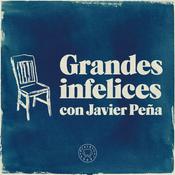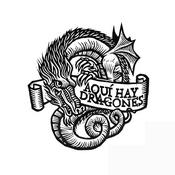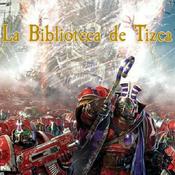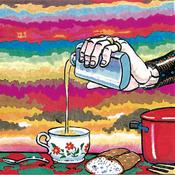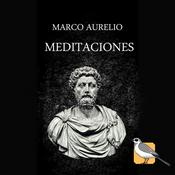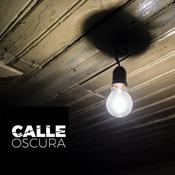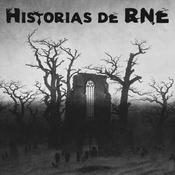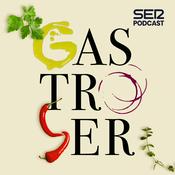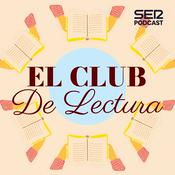114 episodios

Why Christians Should Read the Pagans with Alec Bianco and Sean Berube
06/1/2026 | 1 h 29 min
Today on Ascend: The Great Books Podcast, host Dcn. Harrison Garlick, along with guests Alec Bianco and Sean Berube, explore St. Basil the Great’s letter To Young Men, on the Right Use of Greek Literature, passionately arguing that Christians—especially young men—should actively read pagan classics like Homer, Plato, and Hesiod. Check out thegreatbookspodcast.comCheck out our LIBRARY OF WRITTEN GUIDES to the great books.Drawing on personal testimonies, the trio explains how these pre-Christian texts strengthened their own faith, trained natural virtue, sharpened Scripture reading, and revealed seeds of the Logos planted by divine providence. Through vivid analogies—leaves preparing fruit, bees gathering honey, and despoiling the Egyptians—they, supported by St. Jerome’s defense, contend that pagan literature is not a threat but a providential gift that grace perfects, forming the soul, evoking wonder, and equipping believers to engage the world with confidence and love.SummaryThe conversation highlights how pagan texts address universal human questions—virtue, meaning, fate, and the divine—preparing the soul for revelation, much as leaves nourish fruit on a branch or mirrors help the immature soul see itself. St. Basil’s analogies are unpacked: pagan literature as a shallow pool for beginners, bees selectively gathering honey from flowers, and the need to discriminate good from harmful elements through the standard of Christ. Examples include Odysseus’s restraint with Nausicaa as a model of natural virtue and Socrates’s near-Christian insights on non-retaliation. The guests stress that grace perfects nature, so training in natural virtue via pagan examples elevates rather than diminishes the supernatural call, challenging modern sloth and low expectations of human potential.Providence is a recurring theme: Hebrew faith and Greek reason converged under Roman order to prepare the world for Christ; parallels in myths (floods, giants, serpents) and the Hellenization of Scripture (Septuagint, New Testament in Greek) show God working through pagan culture. References to Tolkien, Lewis, and Justin Martyr’s logos spermatikos underscore that truth found anywhere belongs to Christians. Music and athletics are explored as parallels—pagan modes and contests can form the soul when approached with discernment, just as Doric tunes sobered revelers in Pythagoras’s story.The discussion shifts to St. Jerome’s Letter 70, defending the use of secular literature against accusations of defiling the Church. Jerome cites Moses educated in Egyptian wisdom, Paul quoting pagan poets, and analogies like despoiling the Egyptians or David wielding Goliath’s sword—Christianity takes the best of pagan thought and conquers paganism with it. His provocative image of shaving the captive woman (Deuteronomy) to make secular wisdom a “matron of the true Israel” illustrates stripping away seductive errors to reveal underlying beauty and truth.Ultimately, the episode frames engagement with pagan literature as an act of love: understanding providence, nurturing what is good, evangelizing by meeting souls where they are, and ascending toward the Logos who permeates all reality. The tone is confident and joyful, rejecting both puritanical fear and uncritical consumption in favor of prudent, Christ-centered discernment.KeywordsChristians read pagans, pagan literature Christians, St Basil pagan literature, St Basil Greek literature, why Christians read Homer, why Christians read Plato, classical education Christianity, great books Christianity, and pagan classics faith. Long-tail keywords to target specific searches are should Christians read pagan literature, why young Christian men read

Sir Gawain and the Green Knight Fitt 4 with Chivalry Guild and Banished Kent
30/12/2025 | 1 h 52 min
Today on Ascend: The Great Books Podcast concludes their Christmas reading of Sir Gawain and the Green Knight with Fitt 4, exploring Gawain’s restored armor, journey to the eerie Green Chapel, the three axe swings, Bertilak’s revelations, Morgan le Fay’s role, and the court’s final response.Visit our WEBSITE for our reading schedule and more!Check out our 50 QUESTION AND ANSWER GUIDE to Sir Gawain and the Green Knight.The discussion wrestles with Gawain’s girdle lapse, the degree of his fault, the poem’s moral realism, and its enduring vision of chivalry tempered by humility and grace.Why is this poem worth reading?This 14th-century gem subverts chivalric romance by relocating true heroism from battlefield glory to internal struggles with fear, courtesy, and faith—revealing with wit, irony, and profound humanity how even the “most faultless” knight bears imperfection. Its vivid poetry, layered symbolism (pentangle, girdle, greenness), and Christmas-liturgical depth offer a timeless meditation on pride, mortality, and divine mercy that meets flawed striving with grace—making it an ideal seasonal read for reflecting on our own hidden fears and the courage to face them.Key Discussion PointsRestored Armor & Girdle: Gawain’s gleaming armor (rust scraped off) and open wearing of the girdle for self-preservation—symbolizing lingering fear beneath renewed ideal.Final Temptation: Servant’s offer to lie and let Gawain flee—Gawain refuses, prioritizing truth and fortitude.Green Chapel: Described as ancient barrow/tomb in wild valley—evoking death, pagan past, nature’s savagery, and satanic dread.Three Swings: First (flinch), second (feigned), third (nick)—mirroring castle days; nick as merciful penance for girdle fault.Degree of Error: Guests debate: minor (fear-driven, not malice) yet meaningful lapse in trust/providence; Tolkien downplays, Deacon sees deeper Christian failing.Morgan le Fay vs. Mary: Opposing feminine forces—malicious fae magic vs. protective providence.Gawain’s Reaction: Self-reproach, brief blaming of women, then accepting girdle as lifelong humility token.Court’s Response: Laughter, solidarity—adopting green baldric as fraternity badge, transforming shame into shared emblem.Old French Motto: “Honi soit qui mal y pense”—Order of the Garter motto reframing girdle as honorable.Notable QuotesBanished Kent: “The poem ends on God’s grace… he survives because of that.”George: “Gawain as anti-Lancelot… and anti-Galahad—more human, more endearing.”Thank you for joining this Christmas journey through Sir Gawain. Next week: Why Christians should read the...

Sir Gawain and the Green Knight Fitts 2 and 3 with Dr. Tiffany Schubert
23/12/2025 | 2 h 9 min
Today on Ascend: The Great Books Podcast, Dcn. Harrison Garlick, Dr. Tiffany Schubert of Wyoming Catholic College, George of the Chivalry Guild, and Banished Kent discuss Fitts 2 and 3 of Sir Gawain and the Green Knight!Visit thegreatbookspodcast.com for our reading schedule!Check out our 50 QUESTION-AND-ANSWER GUIDE to Sir Gawain and the Green Knight.Be sure to visit our sister publication, THE ASCENT, for Christian spirituality.Episode SummaryThe panel continues the Christmas reading of Sir Gawain and the Green Knight, exploring Fitts 2 and 3 with Dr. Tiffany Schubert. The discussion covers the meditative passage of time, Gawain’s elaborate armor and pentangle, his wilderness journey, arrival at the lord's castle, and the three bedroom temptations mirroring the lord’s hunts. Themes of courtesy versus Christian prudence, the unexpected location of peril, and human imperfection dominate.Why Sir Gawain and the Green Knight Is Worth ReadingThis poem masterfully redirects chivalric expectations from martial heroism to internal trials of temperance and fidelity, using irony, humor, and subtle symbolism to expose the tensions within knighthood itself. As Dr. Schubert notes, it brings readers “back down into this world”—a murky, incarnate place of comfort and laughter where true danger often hides—while probing whether Christian virtue can govern or perfect courtly ideals. Rich in liturgical resonance, Marian devotion, and realistic grace, it humanizes the heroic quest, making it profoundly relevant for reflecting on temptation, fear, and humility during the Christmas season.Key Discussion PointsTime & Seasons: Opening meditation on cyclical yet forward-moving time; Gawain’s lingering and All Hallows’ departure as liturgical reflection on mortality.Armor & Pentangle: Lavish buildup of Gawain’s gear and “endless knot” (five sets of five perfections, piety surpassing all) as outward ideal—quickly deflated as armor is removed.Mary Inside the Shield: Hidden source of strength and piety governing the public projection of perfection.Wilderness to Castle: Dismissal of monster battles; castle as surprising “answer” to Marian prayer—Providence working through murky, tempting paths.Second Christmas Game: Bertilak’s exchange of winnings parallels the first deadly game, shifting peril to courtesy and domestic temptation.Three Temptations & Hunts: Parallel structure—doe (subtle), boar (fierce), fox (cunning); Gawain resists lust admirably but accepts/conceals girdle out of fear of death.Courtesy vs. Christian Prudence: Repeated bedroom returns (no Joseph-like flight) prolong exposure, allowing lady to exploit deeper flaw—courtesy overriding removal from sin.Confession Ambiguity: Post-girdle absolution raises questions of self-awareness and lingering human frailty.

Sir Gawain and the Green Knight Fitt 1 with Dr. Justin Jackson
16/12/2025 | 1 h 54 min
Today on Ascend: The Great Books Podcast, we are discussing Fitt 1 of Sir Gawain and the Green Knight with Dcn. Garlick, Dr. Justin Jackson of Hillsdale College, Chivalry Guild, and Banished Kent.Check out thegreatbookspodcast.com for our reading schedule.Check out our WRITTEN GUIDE to Sir Gawain and the Greek Knight (posted soon!).Episode SummaryThe panel dives into the 14th-century Middle English masterpiece Sir Gawain and the Green Knight, exploring its mysterious single-manuscript survival, alliterative brilliance, and rich layers of meaning in Fit 1. From the Troy-to-Britain prologue to the shocking arrival of the Green Knight and the beheading game, the discussion uncovers dualities, temptations, and the clash between chivalric courtesy and Christian virtue that make this Christmas tale profoundly relevant.Why Sir Gawain and the Green Knight Is Worth ReadingThis poem stands as one of the greatest works of English literature because it masterfully blends adventure, humor, moral depth, and spiritual insight. As Dr. Jackson notes, it survived by miracle in a single tiny manuscript, yet offers the “greatest chivalric romance” alongside exquisite theological literacy. It probes timeless questions—how do pride, fear, courtesy, and faith collide in a fallen world?—without easy answers, forcing readers to wrestle with their own choices. Tolkien saw it as a meditation on seductive worldly culture versus Christian ethos; the guests highlight its realistic portrayal of human imperfection amid high ideals. Beautifully crafted (alliteration, bob-and-wheel, vivid imagery), often funny, and profoundly Christian, it humanizes the heroic while elevating humility and grace—perfect for Christmas reflection on mortality, temptation, and redemption.Key Discussion PointsManuscript & Poet: A unique survival with Pearl, Cleanness, and Patience; anonymous poet of astounding skill in alliterative revival.Historical Frame: Begins with Troy’s fall and Aeneas (traitor in medieval legend) leading to Brutus and Britain—history as “bliss and blunder.”Arthur’s Court: Young, vital Arthur is admirable yet “somewhat childish,” craving marvels or “life for life” combat.Guinevere’s Gray Eyes: Symbol of wisdom/clarity, yet ambiguous; benchmark of beauty later challenged.Green Knight’s Duality: Terrifying green giant vs. courtly noble—tempting fear/violence vs. courtesy/mercy.The Game: Explicitly “stroke for stroke,” not beheading; court’s violent interpretation reveals failures.Tolkien’s Lens: Tension between seductive chivalric/courtly culture and higher Christian virtue.Gawain’s Intervention: Praised as humble, loyal self-sacrifice to shield Arthur.Notable QuotesDr. Jackson: “The poem is giving you two readings throughout, and then it wants to see which one are you going to appropriate.”Deacon Garlick: “This text captures my imagination… knowledge is an antecedent to love.”George (via Tolkien): “Gawain… as a matter of duty and humility and self-sacrifice.”Resources & RecommendationsTolkien’s translation and scholarly editionJames Winny’s facing-page translationDr. Jackson’s Hillsdale online course lecture (watch after finishing the poem to avoid spoilers)Next episode: Fits 2–3 with Dr. Tiffany Schubert. Join the discussion on Patreon or X!

Plato and Education: The Teacher as a Lover of the Soul
09/12/2025 | 2 h 1 min
Today on Ascend, we discuss Plato, education, the role of the teacher, eros, beauty, and much more drawing from the dialogues First Alcibiades and the Meno. Returning to the podcast, we have Dcn. Garlick, Dr. Frank Grabowski, Dr. Brett Larson, and Thomas Lackey.Visit thegreatbookspodcast.com for our reading schedule.Visit our LIBRARY OF WRITTEN GUIDES to help you read the great books. What does it mean to teach like Plato? In this rich, wide-ranging conversation the panel explores lessons on education drawn from Plato’s First Alcibiades and Meno. The central idea: the true teacher is not an information-dispenser or job-trainer, but a lover of the soul who serves as a living mirror in which the student comes to “know himself” and is drawn toward virtue, happiness, and ultimate beauty.Summary:The conversation revolved around a single, radiant idea: for Plato, the true teacher is not a dispenser of information or a trainer for the marketplace, but a lover of the soul. In First Alcibiades, Socrates positions himself as the living mirror in which the young, ambitious Alcibiades can finally see himself clearly and be drawn toward genuine happiness through virtue. Education is therefore deeply personal, erotic (in the classical sense of an ardent desire for not only pleasure but also nobility and wisdom), and irreducibly communal; self-knowledge is never solitary navel-gazing but requires another soul whose loving gaze reflects one’s own. The panel repeatedly contrasted this rich, teleological vision—where education aims at universal happiness, orders the whole person toward truth, goodness, and beauty, and ultimately points to God as the final mirror—with the thin, “unerotic” reality of modern schooling, which often reduces teachers to talking search engines and students to economic cogs in a materialist machine.A second major thread was the haunting, unresolved tension of the Meno: teaching demands both an able and willing teacher and an able and willing student. Virtue can be cultivated, but it cannot be forcibly downloaded; the student must respond, cooperate, and allow his desires to be re-ordered toward what is truly lovable. This led to broader reflections on beauty, rhetoric, place, and hierarchy: truth is beautiful and therefore insists on being loved; philosophy without rhetoric is impotent, rhetoric without philosophy becomes tyrannical; ugly buildings and disembodied logic deform the soul; natural hierarchy is not abolished by grace but perfected and placed in service of the common good. Throughout, the panel returned to the conviction that genuine education is slow, embodied, relational, and oriented toward the transcendent—an ascent that begins with a teacher who truly sees and loves the soul before him.Key words: Plato, First Alcibiades, Meno, classical education, teacher as lover of the soul, know thyself, virtue, happiness, eudaimonia, beauty, transcendentals, eros, mirror of the soul, rhetoric, philosophy, modern education critique, materialism, teleology, Socratic method, student-teacher relationship, hierarchy, imago Dei, Christian Platonism, and Great Books.This conversation was recorded April 2025.
Más podcasts de Arte
Podcasts a la moda de Arte
Acerca de Ascend - The Great Books Podcast
Escucha Ascend - The Great Books Podcast, La Previa y muchos más podcasts de todo el mundo con la aplicación de radio.es

Descarga la app gratuita: radio.es
- Añadir radios y podcasts a favoritos
- Transmisión por Wi-Fi y Bluetooth
- Carplay & Android Auto compatible
- Muchas otras funciones de la app
Descarga la app gratuita: radio.es
- Añadir radios y podcasts a favoritos
- Transmisión por Wi-Fi y Bluetooth
- Carplay & Android Auto compatible
- Muchas otras funciones de la app


Ascend - The Great Books Podcast
Descarga la app,
Escucha.


